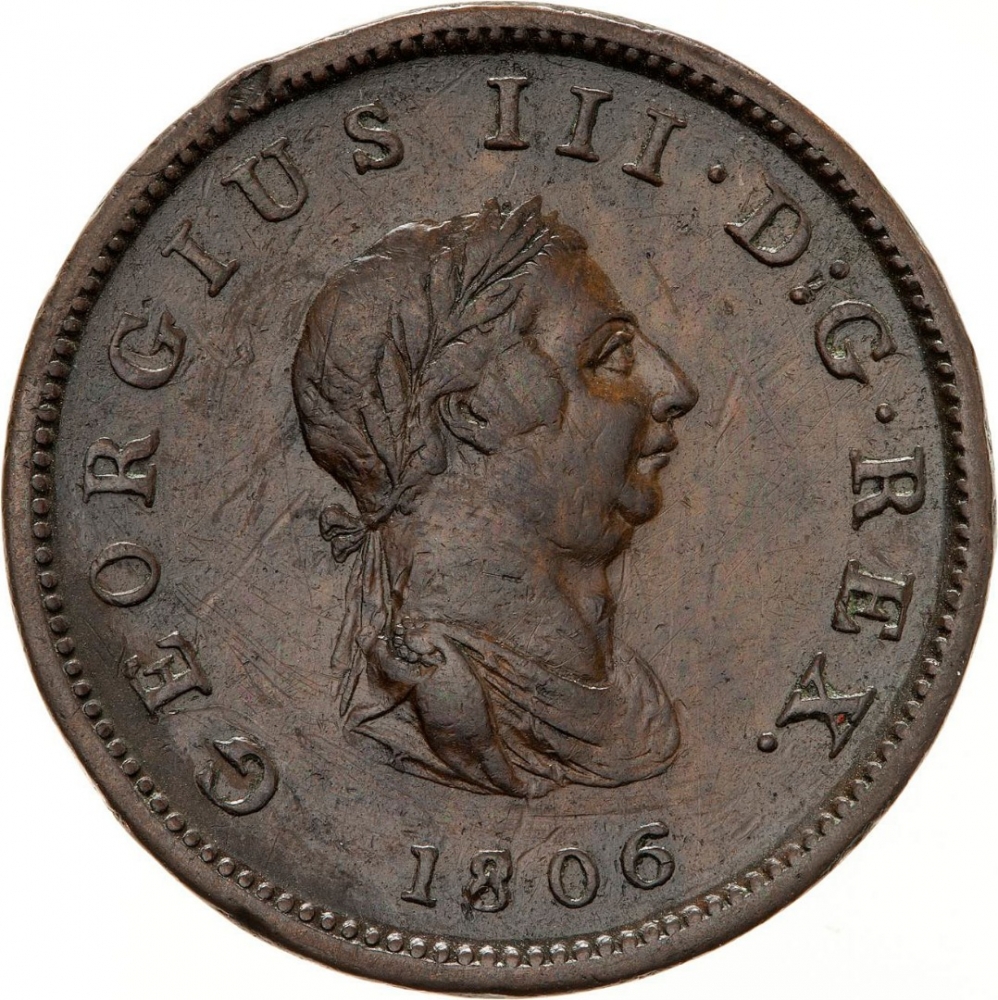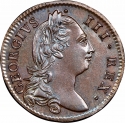You are about to finish your registration. Please check your mailbox (including spam folder). There should be a letter with a confirmation link. Check setting to make sure that your e-mail address is correct.
Send letter againDescription
On June 30, 1806 the Bahamas Assembly ordered £500 in copper pennies from Boulton's Soho Mint in Birmingham. The dies were cut by Conrad Heinrich Kuechler, modeling the obverse on the 1806 English halfpenny. The local population in the Bahamas preferred cut silver to copper tokens and so these coins were refused by the local population, thus the project to mint coppers was abandoned.
The reverse commemorates the victory of Captain Woodes Rogers over pirates. Woodes Rogers (c. 1679 – 1732) was an English sea captain and privateer and, later, the first Royal Governor of the Bahamas. He is known as the captain of the vessel that rescued marooned Alexander Selkirk, whose plight is generally believed to have inspired Daniel Defoe's Robinson Crusoe.
In 1656, Bermudan colonists arrived in the Bahamas founding the first English settlement at New Providence. The colony prospered, but the proximity of the islands to the Spanish trade routes also made the area headquarters for several pirate bands. Since local authorities could not control these renegades the local commerce suffered. The situation became so desperate that in 1717 the Lord Proprietors of the islands surrendered control of the government to George I, who commissioned Captain Woodes Rogers as royal governor. Woodes arrived in the Bahamas in 1718 with heavily armed troops and soon subdued the pirate bands. Some one thousand pirates surrendered and were pardoned; eight, who would not capitulate, were hanged. In 1728 this event was commemorated in the selection of the national motto "With the expulsion of the pirates commerce has been restored".
Obverse

|
A right-facing laureated portrait of George III, and incused into the rim are the words "George III, King by the Grace of God". The initial K appears on the lowest fold of the drapery at the base of the effigy, indicating that the design is the work of the German engraver Conrad Heinrich Kuchler. GEORGIUS III·D:G·REX. |
|---|---|
Reverse

|
Depicts a full-rigged ship sailing right at sea with an island and two ships in the background. Above is the colony name and below is the national motto. BAHAMA |
| Edge |




_Penny_1/1797_03.06.2024_11.05-125.jpg)
_Penny_1/1797_03.06.2024_11.05_01-125.jpg)
_Pence_2/1797_24.11.2016_00.07-125.jpg)
_Pence_2/1797_24.11.2016_00.07_01-125.jpg)